| Umělec 1998/6-7 >> Notes: Intervention Tendencies in Arts | Просмотр всех номеров | ||||||||||||
|
|||||||||||||
Notes: Intervention Tendencies in ArtsUmělec 1998/6-701.06.1998 Tomáš Lahoda | society | en cs |
|||||||||||||
|
"Scene 1: A small farm in midland Tanzania.
Next to poor huts in the middle of a bunch of banana trees, a bright orange inflated ”balloon” is sticking out from earth, tubes coming out of it and an energy source attached to it. The phantom-like structure feels like coming from another planet in this environment. It is economically efficient system for producing bio-gas. One of the third world’s main problems is production of electricity or fossil fuel for cooking and light. In many countries in Africa, women walk a number of kilometers and spend hours just to collect wood for burning. Burning wood produces smoke which pollutes the environment and is unhealthy for eyes and lungs. Danish group of three artists Superflex developed this simple and easy to install mobile unit for producing bio-gas that is able to produce 3 m3 of gas from dung of 2 to 3 pieces of kettle a day which is enough for cooking for 8 to 10 member family a day and light for one gas lamp in the evening. Dung and agricultural surplus rot in a closed container at 20 to 40 degrees Celsius and bacteria transform organic matters to bio-gas (methane, carbon dioxide) and fertilizers (ammoniac). Scene 2: Royal Square in Copenhagen. Parking lot on one of the busiest places in town is partly covered with smashed up cars – broken windows, wrinkled and smashed hoods, doors knocked out, broken lights and cut wheels. Some of these ruins lay on their sides, some on their roofs. The whole scene is lined with a smashed up bus turned on its side. It all doesn’t look like some terrifying mass collision or battle field left by a night attack of furious fans. It is not even a ruin of barricades from a clash with the police. It is a staged installation from the Burn Out: Smashed Parking Lot series made by Danish artists Jes Brinch and Henrik Plenge Jakobsen during Copenhagen’s presentation as a shopping city Wonderful Copenhagen. Scene 3: Slovakia. A train is twisting through wavy countryside. In the meadow, the train is just passing, is a mowed and lined soccer field with gates and corner flags. The traveler sets back to own thoughts after being interrupted from mechanical viewing of countryside passing behind the window. He looks back and the image keeps coming up in his mind – something is wrong here. A field in the middle of countryside and – moreover – it is on a steep downhill meadow! The train has just passed a project made by Slovak artist Peter Kalmus. Scene 4: Kassel Train Station. Side tracks covered with weed are left alone in front of the train station’s hall. They are not lonely, unused tracks, however, they are a place where Austrian artist Lois Weinberger planted the weed which he had collected at other places. Weed spreads fast and aggressively dominates over other plants in its effort to survive. The work was rooted in the artist’s black humor as metaphor for migration issues of our times. Scene 5, 6, 7, etc. They were all presented at the international symposium in Copenhagen at the end of August. The point and the topic consisted in tracing and discussing some of the current tendencies in arts using strategy of interventions into reality and its other simulations. The vocabulary of the strategies are rich in terms such as multidisciplinary, art as a service, esthetics of the everyday, contextual art, documentary tendencies, staging, simulation, etc. In 1996, Hal Foster published a book entitled The Return of the Real. The title alone suggests the typical interest in the real – body and space – which is still described as return to ”reality”. Exhibitions such as Real Life, Live Life, Everyday Life, Real Stories or Private Parts present reality as art and their features include commonplace, banal, ordinary, unimportant, fleeting, peripheral, local, subjective, private and very specific. Compared to modernist approach and classic dichotomy which is based on arts and reality as two contradicting poles, art of the 90’s is getting closer to reality so that it becomes hard to distinguish it from reality. Life Is Sweet In Sweden In 1995, the Swedish city of Göteborg organized the world athletic championship. Swedish artist Aleksandra Mir, living in New York since 1989, presented her project Life is Sweet in Sweden. In New York, she read Swedish newspapers everyday and followed articles and opinions on preparations of her home town for the championship, its changes, architectural boom, planting trees, influx of advertising. At the same time, there were worries how this all would be considered. With the help of 43 sponsors, Mir turned an empty hall into a ”tourist center”, a friendly and pleasant place for meetings and relaxation. A visitor could get a foot massage, eat some fruits for free and have a quiet conversation. There were 12 uniforms for ”hostesses” as a form of some indistinguishable service; anybody could put one on and expose oneself in various roles in public. The project became a practical intervention into everyday life. In her latest project entitled Cinema for the Unemployed in the city of Mos, Norway, Mir showed 12 Hollywood catastrophic films a day for the unemployed. The program for the project mixed cheap, black & white pictures with articles about catastrophes and real advertising of the local employment office. Danish artist Jens Haaning is interested in the influence on infrastructure through social intervention. He turned a gallery into a tourist bureau where the plane tickets were ready-made art objects. They, however, lost their artistic value once used for the flight. The owner was left with only a certificate confirming that the sale of his ticket truly represents a work of art. Due to tax laws, the tickets were taxed by only 7% tax for art objects instead of the usual 15%. Their art value was relative while compared to similar commercial plane tickets, their price was substantially lower. Another project dating back to 1996, he placed a workshop for sewing handkerchiefs into a gallery in Middelburg, Holland. All the employees of the workshop were immigrants, mostly Turkish people. Similarly to other Western companies, Dutch businesses have their products made in the third-world countries with their low salaries. Yet, increase of unemployment is usually linked with the country’s liberal immigration policy. Their government’s negative stance is then obscuring deregulation interest of the multinational companies. Haaning works with the issue of cultural estrangement. He draws his inspiration from the position of immigrants into foreign cultures, pointing at the neglected or less visible sides of our own cultures, the social and economic structures of the Western world and its power and territorial authority. He confronts the audience with conventional idea of democracy and ethics – often using black humor – which is the case of his latest project. He installed loud speakers about the city of Aarhus and played jokes in Turkish over them. Berlin based artist and critic Andreas Selkmann searches for new perspective for art in public space. In his project entitled Reisen für Bakchunin, he placed an ad in press looking for people who resemble or feel like the famous Russian anarchist that spent most of his life in prison and the rest of it he spent traveling and running away. He then invited the found Bakchunins for a ”lunch of anarchists” and he documented the lunch on photographs, including the food. He created a mobile exhibition out of the photographs that was traveling around the country and was offered to businesses, institutions and various other organizations. The show was installed on walls, in hallways, in foyers and cafeterias in many variations, directly in the social sphere of everyday life. Ute Meta Bauer, a curator, critic, professor at the Institut für Gegenwartskunst at the Vienna Academy and publisher of the Meta magazine, promotes partnership dialogue in her work with artists. As a program director at the Stuttgart Kunsthalle, she organized a number of thematic and solo exhibitions (Ready-mades Belong to Everyone, Douglas Gordon, Andreas Gursky, retrospective and contemporary video shows). She also introduced art education as part of art practice. In her projects, she is interested in relationships and approaches to local and peripheral to general and global discourse. She presented short, humorous and almost symptomatic video entitled ? (question mark). A giant question mark is walking around a museum of modern art, looking at the exhibited objects, visitors, greeting them in a way similar to Mickey Mouse in Disneyland and takes photos with them and Henry Moore for the visitors’ family albums. N55. A group of three artists – students at the Academy in Copenhagen – understand art and life as one entity: living together in a little commune is a part of their art project. Their general manifesto, however, doesn’t clearly explain why. They work with other fields in making their products that bear concrete and basic meaning in everyday life. Various ecological, economic, functional and easy-to-assemble ”improvements” for everyday life: a ”three-legged” chair, a table, an air-filter, domestic machine for growing basic food with minimal expenses necessary for the machine’s sources. All of the products, however, take into consideration esthetic and ethical issues. On Holiday – Plamen Dejanov & Swetlana Heger. This sign announces ”presence in absence” of two Vienna based artists who took a vacation after long work – just like ordinary people do. They hired Barbara Steiner, curator at the Ludwigsbur Kunstverein, to do their presentation for them at the symposium while they sat with the audience. Inversion of roles and positions is part of their artistic strategy. Their Los Angeles project entitled To Let consisted in a garage that they sublet for a symbolic price to anybody interested. Their advertising campaign tried to engage local art scene in the project. The garage saw a number of various activities: a fashion photographer held a photo session with models, a local artists exhibited his paintings, a lecture on architecture was organized here, and an art teacher had a workshop for students and somebody threw a birthday party. In Secession’s Young Art exhibition in Vienna, they presented a plinth and a platform on the ground that they also sublet during the course of the show. Anybody had a chance to read the conditions of the rental, price list and possible exchange for other artworks or services. Der Standard, an Austrian daily newspaper, hired the platform for its advertisement in exchange for a full-page ad promoting the exhibition. Similarly, a bookstore selling art books which is based in the Secession hired the platform for their presentation. Since the bookshop didn’t have anybody who would sell the books, Dejanov and Heger offered their services and had themselves hired to sell the publications. An American tourist had an all-day performance while a Californian artists just sent his work to be exhibited. Money that they made at the exhibition, Dejanov and Heger invested into acquisition of young artists’ works and started a collection of modern art. The acquired objects were then exhibited on the plinth and platform. One of the first objects acquired included a recipe for making sausages by Rikrita Tiravanijata. D&H hired a cook to make the sausages and then sold the food in Secession’s restaurant for a commission. The audience were continuously informed of each transaction and at the end of the exhibition, posters were pasted with list of all the ”tenants” and transactions. D&H work on different levels. Creating their own collection, they undermine business practices in art industry, they work as agents of their own work and agents of other jobs and services. They flip the roles and positions within the art establishment. As themes, they take relationships, expectations and interests of art institutions and individual professions represented in them and shift meanings and context of some of the automatism of this system. They set their own, parallel economic system using relative independence of art for their own profit (restrictive employment and residency policies do not apply in arts if part of an art project) as well as profit for other people – even badly paid watchmen can legally make extra money by being part of D&H’s projects. Their artistic strategy is not aimed against the art world. On the other hand, it is affirmative with a slight bit of inversion within the ”rules”. They don’t understand art as autonomous practice that is not dependent on trade and business – they were never separated, they were only separated ideologically. The presentations at the Copenhagen symposium may be summarized in a few notes. Individual freedom and DIY approach goes across traditional categories of art production. Various strategies of simulation and intervention are used as parallel systems and structures, as dialogue without the right to formulate programs opposing the current systems. Most of the projects operate within society in social context as a transparent hybrid on the boundaries of cultural activities. The search for new decentralized ways of circulation and distribution of ideas, thoughts, objects and artifacts is continuously restored, yet without naďvité as any alternatives are already included in establishment and almost instantly absorbed by the market. "
01.06.1998
Рекомендуемые статьи
|
|||||||||||||
|
04.02.2020 10:17
Letošní 50. ročník Art Basel přilákal celkem 93 000 návštěvníků a sběratelů z 80 zemí světa. 290 prémiových galerií představilo umělecká díla od počátku 20. století až po současnost. Hlavní sektor přehlídky, tradičně v prvním patře výstavního prostoru, představil 232 předních galerií z celého světa nabízející umění nejvyšší kvality. Veletrh ukázal vzestupný trend prodeje prostřednictvím galerií jak soukromým sbírkám, tak i institucím. Kromě hlavního veletrhu stály za návštěvu i ty přidružené: Volta, Liste a Photo Basel, k tomu doprovodné programy a výstavy v místních institucích, které kvalitou daleko přesahují hranice města tj. Kunsthalle Basel, Kunstmuseum, Tinguely muzeum nebo Fondation Beyeler.
|







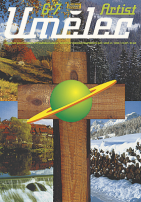




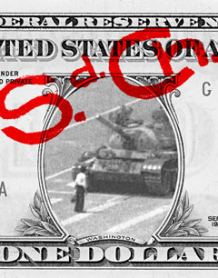











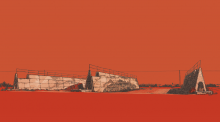
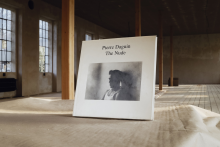
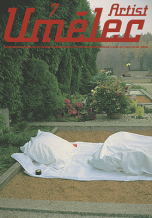
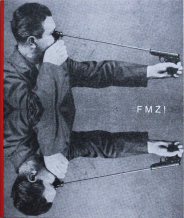


 We Are Rising National Gallery For You! Go to Kyjov by Krásná Lípa no.37.
We Are Rising National Gallery For You! Go to Kyjov by Krásná Lípa no.37.
Комментарии
Статья не была прокомментированаДобавить новый комментарий